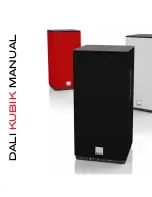
10
100215
ENGLISH
Do not allow children to tamper or play with the
cylinder or hose connections.
CAUTION
Use approved LPG cylinders equipped with an
OPD (overfilling prevention device) valve. Always
keep the cylinder in a vertical position with the
valve on top and installed at ground level on a flat
surface. Cylinders must not be installed near any
heat source and should not be exposed to sun, rain,
and dust. When transporting and storing, turn off
the cylinder valve and fuel valve, and disconnect
the cylinder. Plug the outlet, usually by a plastic
protective cap, if one is available. Keep cylinders
away from heat and ventilated when in a vehicle.
CAUTION
ASSEMBLy
Connecting LPG Cylinder Cont’d.
Grounding
Your generator must be properly connected to an
appropriate ground to help prevent electric shock.
A ground terminal connected to the frame of the generator
has been provided on the power panel. For remote
grounding, connect of a length of heavy gauge
(12 AWG minimum) copper wire between the generator
ground terminal and a copper rod driven into the ground.
We strongly recommend that you consult with a qualified
electrician to ensure compliance with local electrical codes.
Failure to properly ground the generator can result
in electric shock.
WARNING
– Use only standard 20 or 30 pound capacity LPG
tanks with Type 1, right hand Acme threads.
– Verify the requalification date on the tank has
not expired.
– All new cylinders must be purged of air and
moisture prior to filling. Used cylinders that have
not been plugged or kept closed must also be
purged.
– The purging process should be done by a LPG
supplier. (Cylinders from an exchange supplier
should have been purged and filled properly
already).
– Always position the cylinder so the connection
between the valve and the gas inlet won’t cause
sharp bends or kinks in the hose.
NOTE
Connecting Liquid Petroleum Gas (LPG) Cylinder
1. Make sure the fuel valve on the generator is in the
off position.
2. Attach the LPG hose (included) to the LPG hose
connector on the side of the generator and tighten
with a 19 mm or adjustable wrench (not included).
(A)
Important: DO NOT use tape or any other type of
sealant to seal LPG hose connection.
3. Remove the safety plug or cap from the cylinder
valve.
4. Attach the other end of the hose to the LPG
connector on the cylinder and hand tighten.
If there is a strong smell of gas: Close off the gas
supply at the cylinder. Use soapy water, which will
produce a large bubble at the point of any leak, to
check the hose, and connections on the cylinder valve
and the generator. Do not smoke or light a cigarette,
or check for leaks using a match, open flame source
or lighter. Contact a qualified technician to inspect
and repair the LPG system if a leak is found, before
using the generator.
WARNING
A














































